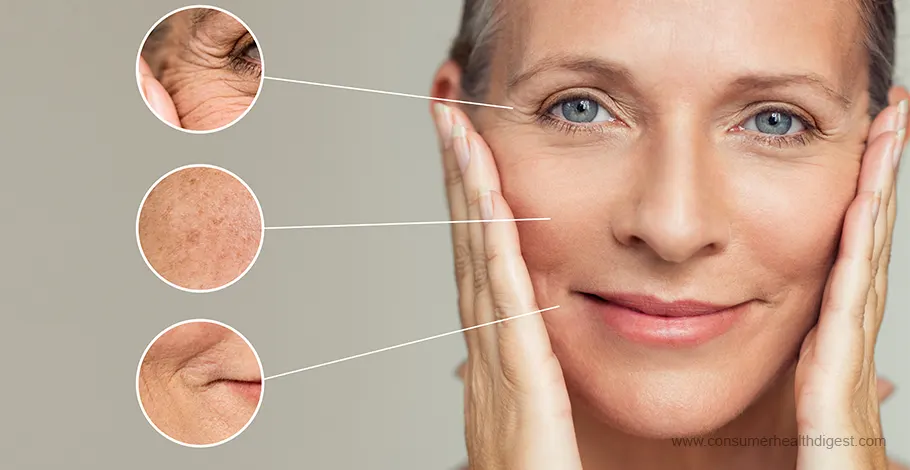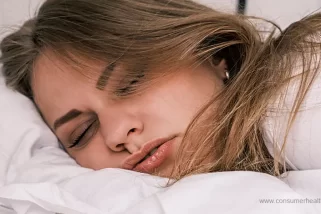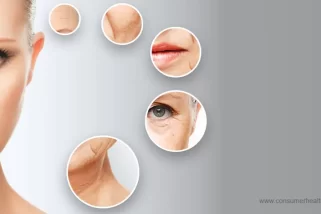Introduction
As we age, our skin develops wrinkles, creases, or folds that take away from its smooth, youthful appearance. They are a normal aspect of growing older and are frequently seen as indicators of maturity and life experience.

On explaining about the main causes of wrinkles, Dr. Jerry Friedman, Oral & Maxillofacial Surgeon says that aging is the primary cause of wrinkles. As we get older, the natural elasticity of our skin decreases, which leads to a greater prevalence of wrinkles. This loss of elasticity is mostly due to the weakening of collagen, but other factors, including stress, sun exposure, and smoking can also contribute to the development of wrinkles
It's important to recognize the many types of wrinkles because each one has unique contributing variables and causes. Individuals can have a better understanding of the underlying causes of wrinkle creation and seek customized therapies or preventive measures by determining the precise type of wrinkle they have.
We will examine each of the six primary categories of wrinkles in this extensive post: hereditary, gravitational, textural, dynamic, static, and environmental wrinkles.
Types of Wrinkles
We will explore the characteristics, causes, and potential treatments for each type, empowering readers with valuable knowledge to address their specific concerns effectively.
Dynamic Wrinkles
Expression lines, another name for dynamic wrinkles, are caused by prolonged, repeated facial motions and muscle contractions. These creases and lines are created as the muscle beneath the skin contracts, forcing the skin on top to bunch up. These transient lines become permanently inscribed on the face as we age because the skin becomes less elastic.
Dynamic wrinkles most commonly occur in the forehead, frown lines (the space between the eyebrows), and crow's feet (the area surrounding the eyes). These wrinkles correspond exactly to our facial expressions, including frowning, squinting, and smiling. Although these expressions are normal and part of our daily lives, with time, deep-set wrinkles may emerge as a result of the skin in these places repeatedly creasing. [1]
Dynamic wrinkle treatments frequently entail reducing or relaxing the underlying muscle activity. Injections of botulinum toxin, or Botox, are a popular option because they temporarily paralyze the targeted muscles, smoothing out the wrinkles that cover them. Retraining the muscles and minimizing the appearance of these wrinkles can also be accomplished with facial exercises and massages.
Static Wrinkles
Unlike dynamic wrinkles, static wrinkles are not brought on by the movement of muscles or expressions on the face. Rather, they stem from the skin's natural aging process-induced loss of volume and flexibility. The proteins that keep our skin tight and elastic, collagen and elastin, are produced in smaller amounts by our aging skin.
Particularly on the cheeks, around the lips, and on the neck—areas of the face with thin, sensitive skin—static wrinkles are prone to developing. In addition, they are present on the hands and décolletage region of the body. The etched appearance of these wrinkles makes them more noticeable when the skin is at rest or in a relaxed state.
Usually, the goal of treating static wrinkles is to increase the production of collagen and give the affected areas more volume. Injectable fillers, like hyaluronic acid or poly-L-lactic acid, can be used to add volume and smooth out wrinkles from within, while topical retinoids, chemical peels, and laser treatments can improve collagen production. [2]
Textural Wrinkles
Textural wrinkles are superficial wrinkles that occur on the skin's surface and give it a coarser, less smooth texture. They are also sometimes referred to as fine lines or creases. Sun exposure, dryness, and a reduction in the skin's natural oil and moisture production are some of the common causes of these wrinkles.
Although textural wrinkles can appear anywhere on the body, they are most typically observed on the face, neck, hands, and arms—areas that are regularly exposed to the sun. Furthermore aggravating these wrinkles are environmental factors such as smoking, pollution, and inadequate skincare practices.
A comprehensive strategy that addresses the underlying causes of textural wrinkles, including sun protection, hydration, and exfoliation, is frequently used to treat them. Topical therapies such as antioxidants, retinoids, and alpha-hydroxy acids can help reduce the visibility of these fine lines and enhance the texture of the skin. For more severe cases of textural wrinkles, professional treatments including chemical peels, microdermabrasion, and laser resurfacing can also be helpful.
Gravitational Wrinkles
Gravitational wrinkles, sometimes referred to as folds or drooping, are deep furrows caused by gravity and the gradual loss of skin elasticity. The skin loses its firmness and elasticity as we age because the collagen and elastin fibers that sustain the skin start to degrade. This can cause deep folds and sagging in places like the neck, jowls (around the jawline), and nasolabial folds (the lines between the nose and mouth). It can also be exacerbated by the effects of gravity.
The lower face and neck are two places where the skin is thinner and less supported by underlying tissues, making these types of wrinkles especially evident there. Gravitational wrinkles can also occur as a result of genetics, sun exposure, and weight fluctuations.
It is frequently necessary to use a combination of non-surgical and surgical treatment methods to address gravitational wrinkles. Injectable fillers, radiofrequency skin tightening, and ultrasound therapy (Ultherapy) are examples of non-surgical procedures that can help tighten and restore volume to the skin, minimizing the appearance of wrinkles and sagging. Surgical procedures like facelifts, brow lifts, and neck lifts may be suggested to physically tighten and realign the underlying tissues and skin in more severe situations.
Environmental Wrinkles
The term “environmental wrinkles” refers to wrinkles that result from exposure to outside elements, such as pollution, smoking, and the sun's harmful ultraviolet radiation. Although these environmental aggressors can cause wrinkles on any region of the body that is routinely exposed to them, the face, neck, hands, and other areas of the body that are not usually covered by clothing are the most common places to see them.
One of the main factors contributing to environmental wrinkles is sun exposure. UV rays can harm the skin's collagen and elastin fibers, which can promote early aging and the development of wrinkles, age spots, and other symptoms of photoaging.
In addition to causing pollutants and free radicals that harm the skin's structural integrity and hasten the aging process, pollution, and smoking can also exacerbate the development of environmental wrinkles. [3]
Adopting a thorough sun protection regimen that includes wearing protective clothes, broad-spectrum sunscreen, and shade whenever possible is essential to preventing environmental wrinkles. Reduced risk of getting these kinds of wrinkles can also be achieved by abstaining from smoking and limiting exposure to pollutants.
Topical antioxidants and skin-rejuvenating procedures such as chemical peels and laser resurfacing can help prevent environmental wrinkles from forming in the first place and make you seem younger and more radiant.
Genetic Wrinkles
While age and environmental factors are major contributors to wrinkle development, certain people are genetically predisposed to wrinkle development. Several features of skin aging, such as collagen formation, elasticity, and skin aging pace, can be influenced by genetic factors.
When compared to people of the same age and lifestyle, those who are genetically predisposed to wrinkles may see the onset of lines and creases earlier or experience more severe or noticeable wrinkling. This can be explained by elements such as skin type, melanin concentration, and the skin's ability to produce collagen and elastin effectively.
Although wrinkles caused by heredity are mostly inescapable, they can be delayed and their severity reduced by following a proactive skincare regimen and limiting exposure to environmental variables like pollution and sun damage. To address pre-existing genetic wrinkles and encourage a more youthful, radiant appearance, getting professional treatments like injectable fillers, laser resurfacing, and other skin-rejuvenating procedures can be beneficial. [4]
Conclusion
Although wrinkles are an unavoidable and natural aspect of aging, people can be more empowered to take preventative action and seek the right treatments if they are aware of the many varieties. People can make educated judgments about their skincare regimens, lifestyle choices, and possible treatment options by understanding the causes and contributing factors behind each type of wrinkle.
Every kind of wrinkle has its own set of problems and answers, from dynamic wrinkles brought on by frequent facial movements to environmental wrinkles brought on by pollution and sun exposure. People can effectively address their unique wrinkle difficulties and preserve a more young, radiant appearance for years to come by adopting a holistic approach that combines preventive measures, focused treatments, and a commitment to general skin health.
4 Sources
We review published medical research in respected scientific journals to arrive at our conclusions about a product or health topic. This ensures the highest standard of scientific accuracy.
[1] Sun Y, Li Y, Zhang Y, Dong R, Lan X, Zhang M, Yu N, Long X. Unparallel improvement patterns of dynamic wrinkles and skin quality after botulinum toxin type A treatment on the upper face. Skin Res Technol. 2023 Mar;29(3):e13309. doi: 10.1111/srt.13309. PMID: 36973993; PMCID: PMC10155803.[2] Kang SH, Moon SH, Rho BI, Youn SJ, Kim HS. Wedge-shaped polydioxanone threads in a folded configuration ("Solid fillers"): A treatment option for deep static wrinkles on the upper face. J Cosmet Dermatol. 2019 Feb;18(1):65-70. doi: 10.1111/jocd.12557. Epub 2018 Apr 19. PMID: 29673044.
[3] Parrado C, Mercado-Saenz S, Perez-Davo A, Gilaberte Y, Gonzalez S, Juarranz A. Environmental Stressors on Skin Aging. Mechanistic Insights. Front Pharmacol. 2019 Jul 9;10:759. doi: 10.3389/fphar.2019.00759. PMID: 31354480; PMCID: PMC6629960.
[4] Makrantonaki E, Bekou V, Zouboulis CC. Genetics and skin aging. Dermatoendocrinol. 2012 Jul 1;4(3):280-4. doi: 10.4161/derm.22372. PMID: 23467395; PMCID: PMC3583889.







 This article changed my life!
This article changed my life! This article was informative.
This article was informative. I have a medical question.
I have a medical question.
 This article contains incorrect information.
This article contains incorrect information. This article doesn’t have the information I’m looking for.
This article doesn’t have the information I’m looking for.